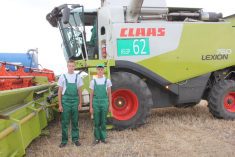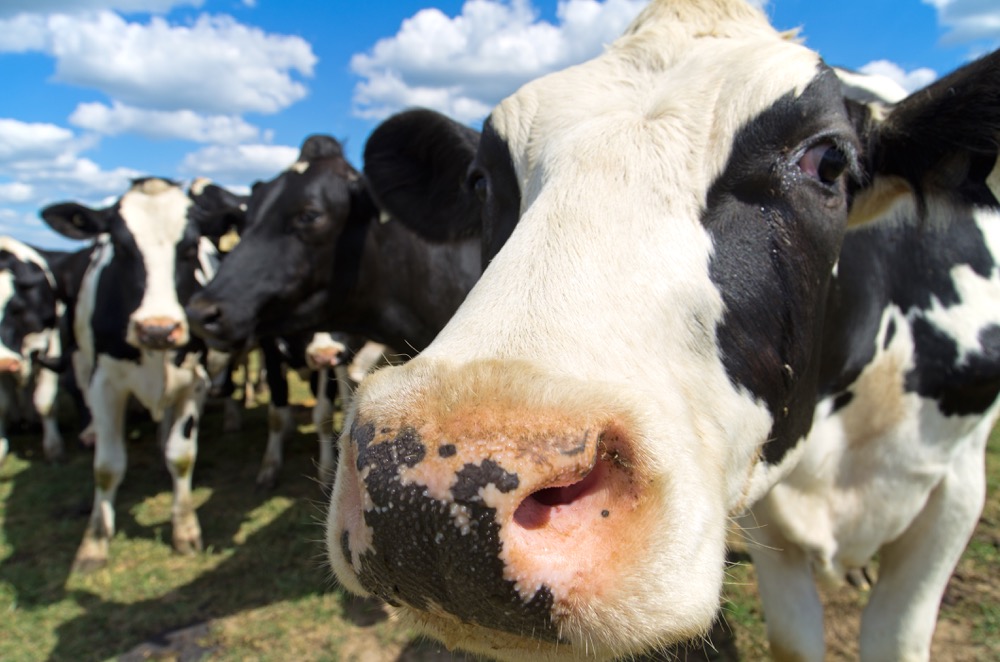I continue to witness arguments over different methods of farming.
But considering the variety of farms around the world, and that most of them are very small compared to the Canadian average, combative conversation is really rather unwarranted and, in many cases, an uneducated dialogue.
When one disparages farms that are organic or ones that use full-on technology, this does not take into consideration the importance of all food systems. What is important to discuss at this point and time in history is the need to revisit the conservation and protection of diversification particularly in seeds, the building of soil, and regeneration of agriculture.
Read Also

More precious than gold
When commercial fertilizers no longer meet the needs of the world’s farmers, the value of manure will grow, says Alberta Farmer columnist Brenda Schoepp.
Standing in a field of GM canola in Western Australia, we were discussing genetically modified versus non-GM crop production. On this farm, the high salinity of the soil was addressed using saltbush in a natural rotation. The restriction in production was offset with a GM canola variety that yielded more. The combination of natural and technical practices allowed the farmer to thrive.
Down the road, a young farmer was rearing fungus to incorporate into soil and interact with bacteria. It was a long-term project to understand the relationship between soil function and microbial diversity, and he was willing to suffer a few years of lower production for the sake of the soil. In time, he may be ahead of the game in terms of production.
- More with Brenda Schoepp: Give yourself the gifts that make life so much better
In Southern Australia, I stood in a field of non-GMO canola used in a rotation for production of alfalfa (called lucerne there). The natural untreated crop was integral to production because the compressed legume was exported to Japan, a country which does not tolerate a long list of applications in its imported products.
The Netherlands prohibits the planting of engineered seed and products must be labelled, including animal products. From recent public and farmer demand, the GM soybean is being replaced by use of non-GM protein sources such as quinoa.
Travelling through the English countryside non-GM crops are evidently flourishing. One of the strong reasons for opposition to GM crop is the effect on wildlife, including bees. Animal feed containing GM grain or legume may be sent to the U.K. Despite some ongoing trials, the chance of GM crops in the English countryside is not on the radar, even post-Brexit.
One stop was at an English eco-farm of organic and permaculture design focused on the social aspect of farming. The output of the farm was just a part of the main revenue stream as this was a place for people to come and work or heal. It was home to a variety of plants, animals, and insects; and welcomed the elderly, the infirm, the challenged, and the overwhelmed. You may argue that the reduced output was proof that one needs high-cost inputs and technology to farm. But that was not the purpose of this farm. Social farming is a growing trend in Europe. Taking a positional approach to the eco-farm is to say that there is not a societal need or place for agriculture.
Agriculture is a part of nature and is indeed part of society — be that in the products of the farm or in the space it provides, the sequestering of carbon, and the cleaning of air or the building of soil.
Standing in a banana plantation talking to farmers and exporters, I observed organic trees that used hot peppers at the base to ward off pests, and that produced 24 kilograms of bananas and two crops, pepper and banana. The other cultivars produced one crop of 10 to 18 kilograms of bananas.
The difference in the non-organic or treated crop was in the flesh and the skin. The commercial banana that was also sprayed had a thick skin that did not bruise during transport making it eye appealing on the outside and it had few seeds, making it eye appealing on the inside. Despite this hybrid variety being less productive, it was more favourable for export and consumer demand for perfection, putting pressure on farmers to increase inputs to produce fewer thick-skinned bananas.
There are more than 570 million farmers in the world and 90 per cent of them work on family farms. As countries and regions strive for food security, and even food sovereignty, the building up of soil will also play an important role in the overall picture.
Bringing it home, I think of Newfoundland, which has recently opened Crown land for agricultural production. The original farmed soil in the province was created from cod waste. A GM seed, or the use of chemical or fertilizer will not create this much-needed base. This is nature’s gentle reminder that food security starts from the ground up.
I have come to appreciate the complexity of every farmer’s story. Arguing against GM, conventional, or organic farming is moot. We must always allow farmers and societies both the opportunity of education and the choice of how they want to farm so they can best invest, divest, or initiate change on their farms.
















